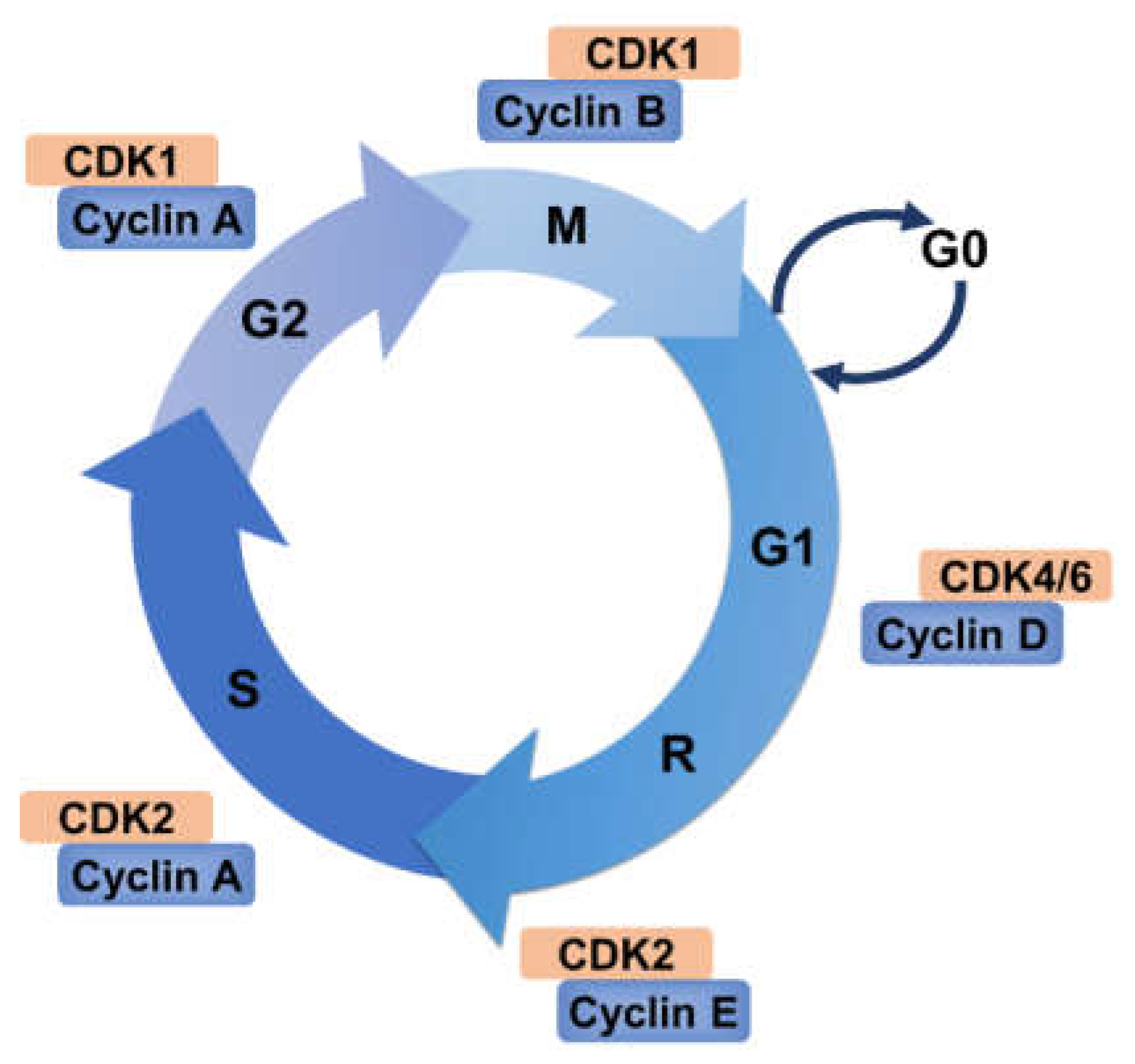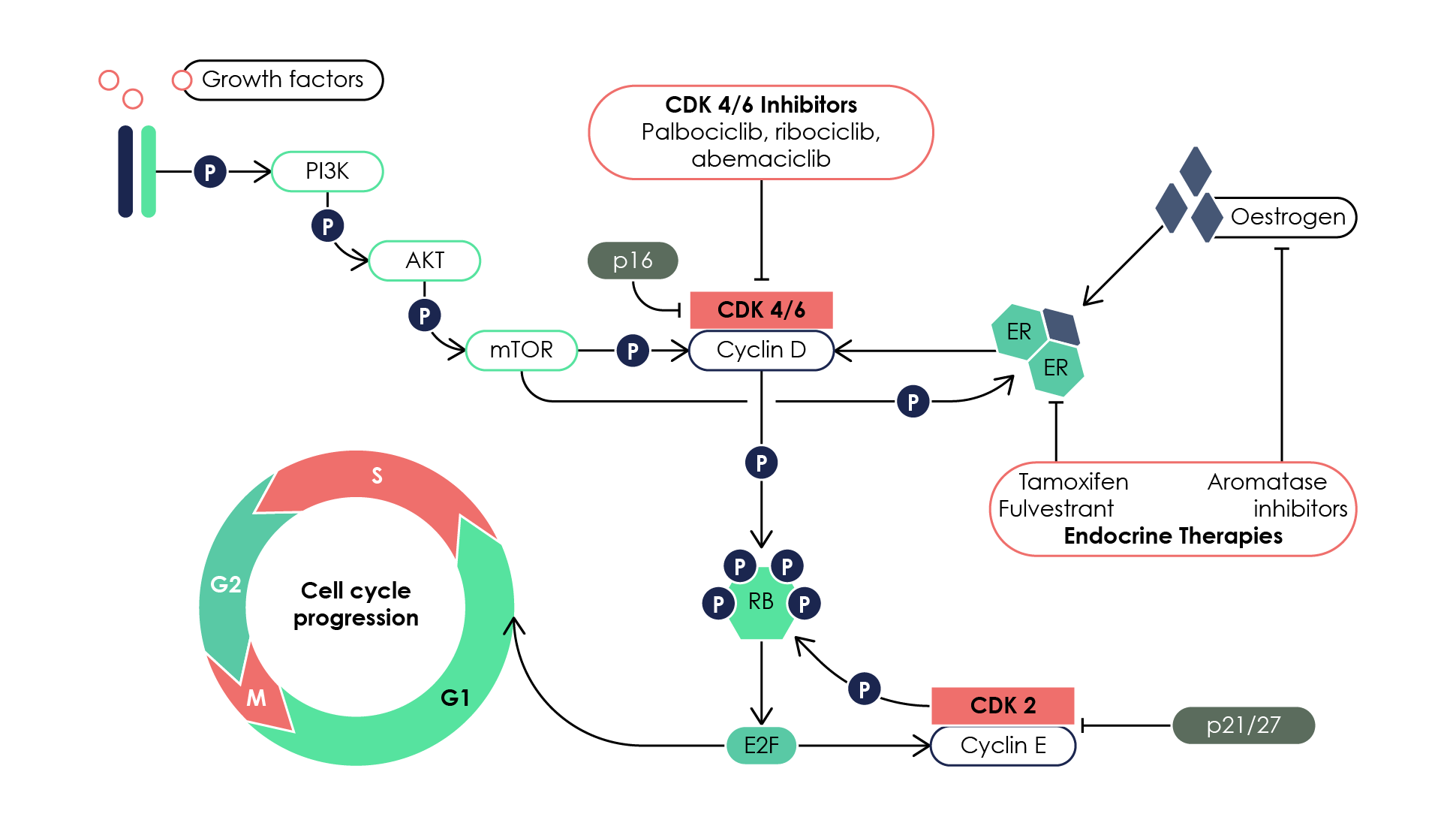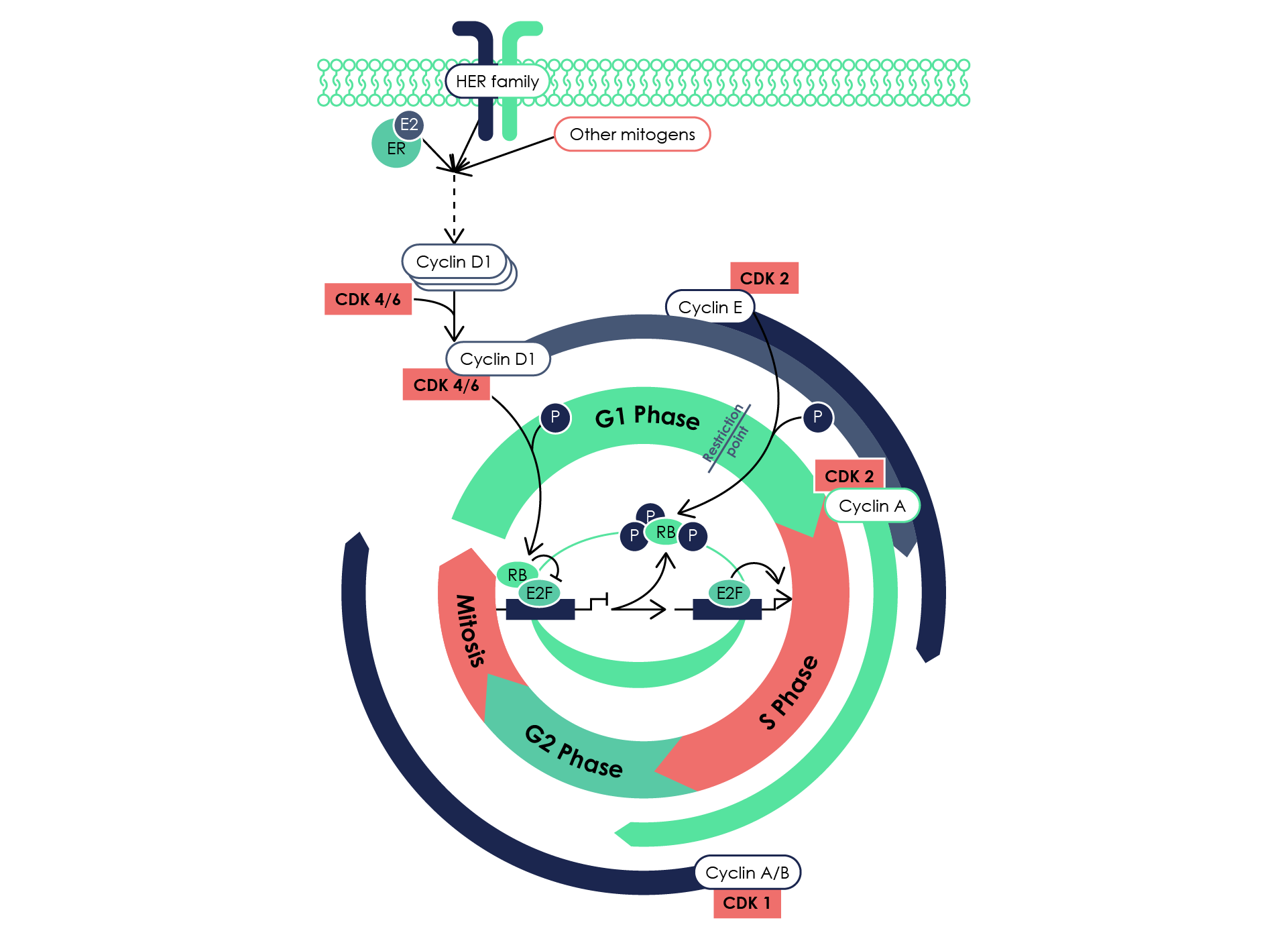
IJMS Free FullText The Involvement of Ubiquitination Machinery in
Cyclin-dependent kinases (CDKs) are key players in cell cycle regulation. So far, more than ten CDKs have been described. Their direct interaction with cyclins allow progression through G1 phase, transitions to S and G2 phase and finally through mitosis (M). While CDK activation is important in cell renewal, its aberrant expression can lead to the development of malignant tumor cells.

The cryoelectron microscopy structure of the human CDKactivating
A cyclin-dependent kinase inhibitor (CKI) is a protein that interacts with a cyclin-CDK complex to block kinase activity, usually during G1 or in response to signals from the environment or from damaged DNA. [1] In animal cells, there are two major CKI families: the INK4 family and the CIP/KIP family. [1]

Antiprogestin Effects on Cyclin, CDK, and CDK Inhibitor Abundance
PF-06873600 CDK 2,4,6 Inhibitor Breast Cancer Metastatic Phase 1 New Molecular Entity PF-07062119 GUCY2c CD3 Bispecific Antibody Solid Tumors (Biologic) Phase 1 New Molecular Entity. Gene Therapy, coagulation factor VIII (F8) Hemophilia (Biologic) (RMAT, FAST TRACK, ORPHAN - U.S., E.U.) Phase 3 New Molecular Entity

CDK4/6 Inhibitor Selection
CDK-9 inhibition assay was achieved through CDK-9 Kit from Biosciences (San Diego, USA) and utilized as the industrialist's prescript. The procedure was done in triplicate and IC 50 magnitude for the selected candidates VII, VIII, X, and XIII were detected according to the reported method [73]. 4.2.3. Apoptosis estimation

Structural insights into the functional diversity of the CDKcyclin
Positive high-level results from the CAPItello-291 Phase III trial showed that AstraZeneca's capivasertib in combination with Faslodex (fulvestrant) demonstrated a statistically significant and clinically meaningful improvement in progression-free survival (PFS) versus placebo plus Faslodex in patients with hormone receptor (HR)-positive, human epidermal growth factor receptor 2 (HER2)-low.

Figure 1 from CyclinDependent Kinases (Cdk) as Targets for Cancer
Book your Sousville holiday rentals online. Explore a large selection of holiday homes, including houses, apartments & more: the perfect self catering accommodation with reviews for short & long stays in Sousville, France. Ideal for families, groups & couples. Vrbo offers the best alternatives to hotels.

Structural basis of inhibition of CDKcyclin complexes by INK4 inhibitors
Description. Overview. A cell-permeable, non-toxic, phenylaminopyrimidinyl-acrylamide compound that acts as a highly potent, selective, ATP-site directed, and irreversible inhibitor of Cdk7 (IC 50 = 3.2 nM). Acts by allosterically and covalently modifying Cys312 located outside the canonical kinase domain.

Digital Development Gene Details
The CDK family comprises 21 phosphotransfer enzymes with diverse cellular functions. CDK1, −2, −4 and −6 play key roles in the regulation of the eukaryotic cell cycle, CDK8-9 and −19 are involved.

CDK4/6 Inhibitors
Recent studies on cyclin-dependent kinase (CDK) inhibitors have revealed that small molecule drugs have become very attractive for the treatment of cancer and neurodegenerative disorders. Most CDK inhibitors have been developed to target the ATP binding pocket.

ROS generation is upstream of JNK activation and JNK activation is
CDK7 is a cyclin-dependent kinase shown to be not easily classified. CDK7 is both a CDK-activating kinase (CAK) and a component of the general transcription factor TFIIH . Introduction

Cyclindependent kinase 7 wikidoc
The evolution of cyclin dependent kinase inhibitors in the treatment of cancer Komal Jhaveri , Howard A Burris 3rd , Timothy A Yap , Erika Hamilton , Hope S Rugo , Jonathan W Goldman , show all Pages 1105-1124 | Received 11 Feb 2021, Accepted 07 Jun 2021, Published online: 01 Sep 2021 Cite this article https://doi.org/10.1080/14737140.2021.1944109

Structural basis of inhibition of CDKcyclin complexes by INK4 inhibitors
Cyclin-dependent kinases (CDKs) lie at the heart of eukaryotic cell cycle control, with different cyclin-CDK complexes initiating DNA replication (S-CDKs) and mitosis (M-CDKs)1,2. However, the.

The effects of CDK inhibition on CDK1 kinase activity and its
Cyclin-dependent kinases (CDKs) are protein kinases characterized by needing a separate subunit - a cyclin - that provides domains essential for enzymatic activity. CDKs play important roles in the control of cell division and modulate transcription in response to several extra- and intracellular cues. The evolutionary expansion of the CDK family in mammals led to the division of CDKs into.

(PDF) Cyclindependent kinases
To date, the CDK inhibitors (CDKIs), specifically the ones that block the enzyme activity of CDK4 and CDK6 (CDK4/6), have been approved by FDA for the treatment of metastatic hormone receptor positive breast cancer.

(PDF) CyclinDependent Kinases (CDK) and Their Role in Diseases
Emerging approaches to CDK inhibitor development, a structural perspective I. Hope, J. A. Endicott and J. E. Watt, RSC Chem. Biol., 2023, 4, 146 DOI: 10.1039/D2CB00201A This article is licensed under a Creative Commons Attribution 3.0 Unported Licence. You can use material from this article in other publications without requesting further permissions from the RSC, provided that the correct.
CDK SHOP YouTube
Introduction. Cell division is controlled by various elements [1-10], especially serine/ threonine protein kinase complexes, called cyclin-dependent kinases (CDKs), and cyclins, whose expression is prominently regulated by the binding to CDK inhibitors [11, 12].In all eukaryotic species, these genes are classified into different families. It is well-established that the complexes of cyclin.